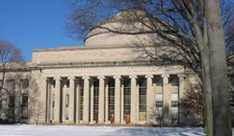
Integration and Operation of Post-combustion Capture System on Coal-fired Power Generation: Load Following and Solvent Storage
Plant Power: The Cost of Using Biomass for Power Generation and Potential for Decreased Greenhouse Gas Emissions
Water Footprint of Electric Power Generation: Modeling Its Use and Analyzing Options for a Water-scarce Future
Carbon Dioxide Capture by Chemical Absorption: A Solvent Comparison Study
Feasibility of Air Capture
Using Auxiliary Gas Power for CCS Energy Needs in Retrofitted Coal Power Plants
Strategies for Demonstration and Early Deployment of Carbon Capture and Storage: A Technical and Economic Assessment of Capture Percentage
The Future of Coal
Project: Using Auxiliary Gas Power for CCS Energy Needs in Retrofitted Coal Power Plants
Research Team: Sarah Bashadi, Howard Herzog and Randall Field
Sponsors: BP and StatoilHydro
Year: 2010
Abstract:
Post-combustion capture retrofits are expected to a near-term option for mitigating CO2 emissions from existing coal-fired power plants. Much of the literature proposes using power from the existing coal plant and thermal integration of its supercritical steam cycle with the stripper reboiler to supply the energy needed for solvent regeneration and CO2 compression. This study finds that using an auxiliary natural gas turbine plant to meet the energetic demands of carbon capture and compression may make retrofits more attractive compared to using thermal integration in some circumstances. Natural gas auxiliary plants increase the power output of the base plant and reduce technological risk associated with CCS, but require favorable natural gas prices and regional electricity demand for excess electricity to make using an auxiliary plant more desirable. Three different auxiliary plant technologies were compared to integration for 90% capture from an existing, 500 MW supercritical coal plant. CO2 capture and compression is simulated using Aspen Plus and a monoethylamine (MEA) absorption process. Thermoflow software is used to simulate three gas plant technologies. The three technologies assessed are the gas turbine (GT) with heat recovery steam generator (HRSG), gas turbine with HRSG and back pressure steam turbine, and natural gas boiler with back pressure steam turbine. The capital cost of the MEA unit is estimated using the Aspen Icarus Process Evaluator, and the capital cost of the external GT plants are estimated using the Thermoflow Plant Engineering and Cost Estimator. The gas turbine options are found to lead to electricity costs similar to integration, but their performance is highly sensitive to the price of natural gas and the economic impact of integration. Using a GT with a HRSG only has a lower capital cost but generates less excess electricity than the GT with HRSG and back pressure steam turbine. In order to generate enough steam for the reboiler, a significant amount of excess power was produced using both gas turbine configurations. This excess power could be attractive for coal plants located in regions with increasing electricity demand. An alternate capture plant scenario where a greater demand for power exists relative to steam is also considered. The economics of using auxiliary plant power improve slightly under this alternate energy profile scenario, but the most important factors affecting desirability of the auxiliary plant retrofit remain the cost of natural gas, the full cost of integration, and the potential for sale of excess electricity.
Publications:
Bashadi, S. and H. Herzog, "Using Auxiliary Gas Power for CCS Energy Needs in Retrofitted Coal Power Plants," Energy Procedia, Vol 4, pp 1828–1834, Feb (2011). <PDF>
Bashadi, S., "Using Auxiliary Gas Power for CCS Energy Needs in Retrofitted Coal Power Plants," M.I.T. Masters Thesis, June (2010). <PDF>